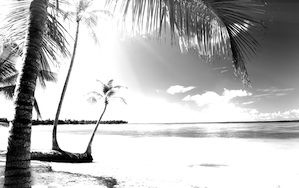“One way to promote your rum is as a ‘bling bling’ drink and use marketing,” says Burrell. “In the States there are a few. They are going after the vodka market. That’s how some white rum brands do it; they have to go out of their category to recruit super-premium white rum drinkers – rum drinkers tend to drink dark.”
One wonders what Redlefsen would have said about bling in 2006, but in 2013 he sees it as “passé”. “Especially since the financial meltdown,” he adds. “Consumption habits have changed and ostentatious [branding] is no longer as accepted. Look at the new designs and styles of most bars that are opening which are very far away from the early to mid-2000 bling – much more understated.”
One way is to come out of the dark into the light. In the four years since the family-owned Guatemalan brand, Botran, relaunched, it has garnered a reputation for aged Solera rums and has witnessed triple-digit growth in consecutive years to make it a 100,000-case brand. Late last year Botran entered the white rum market, albeit with a soft launch, with Reserva Blanca. “There are many premium white rums now but they have concentrated on being in-your-face expensive and have not communicated on the rum. We are not trying to be vodka,” says Frank Quiñones, global commercial director of Botran.
With a price point of $18-$20 in the US and £20 in the UK, Botran Reserva Blanca is a manageable step up from Bacardi, nestled at $14/£14. So, for Botran, a small company with an even smaller marketing budget, success will be forged on taste alone. “You can sip it and still enjoy it – either neat or with ice. In blind tastes most people say it’s an aged rum,” says Quiñones.
With the US’s largest distributor, Southern Wine & Spirits, onboard with its white rum, Botran is looking to Florida. Most US rum sales are in Florida because of the Hispanic population. But for Botran, the US and Europe is pretty much the extent of ambition for Reserva Blanca. “We are not looking to take over the world with this. We are an aged rum company – we just needed a white rum in our portfolio. It’s not that we are pessimistic – we believe there is a potential for this white rum – but no one has nailed it yet.”
Cocktails
Local-rum drinkers apart, white rum is for mixing. Big-flavour cocktails tend to negate the need for a £30 rum – this is where cheaper, less complicated rums have their place. Delicate rums demand more delicate cocktails. Here’s Ian Burrell to explain: “In top-end bars such as Artesian they would use better quality white rums to make Daiquiris – if the rum isn’t lost then you can charge a premium.” So Daiquiris, Sours and Mojitos are where it pays to go with quality, says Burrell, but there are also serves such as white rum and tonic with a twist of orange, now a favourite in Spain, and Burrell’s own suggestion: white rum Old Fashioned with orange bitters. “It looks clear but there’s a lot of flavour,” he says.
At the sharp end of the cocktail world we hear murmurs of Mojito discontent. Just look at The World’s 50 Best Bars Brands Report, where the Mojito slipped from being king of the cocktails to third behind the Old Fashioned and the Dry Martini within a year. It’s fair to say the ’tenders behind those bars are a brutally fashionable bunch and are probably bored senseless by muddling mint.




